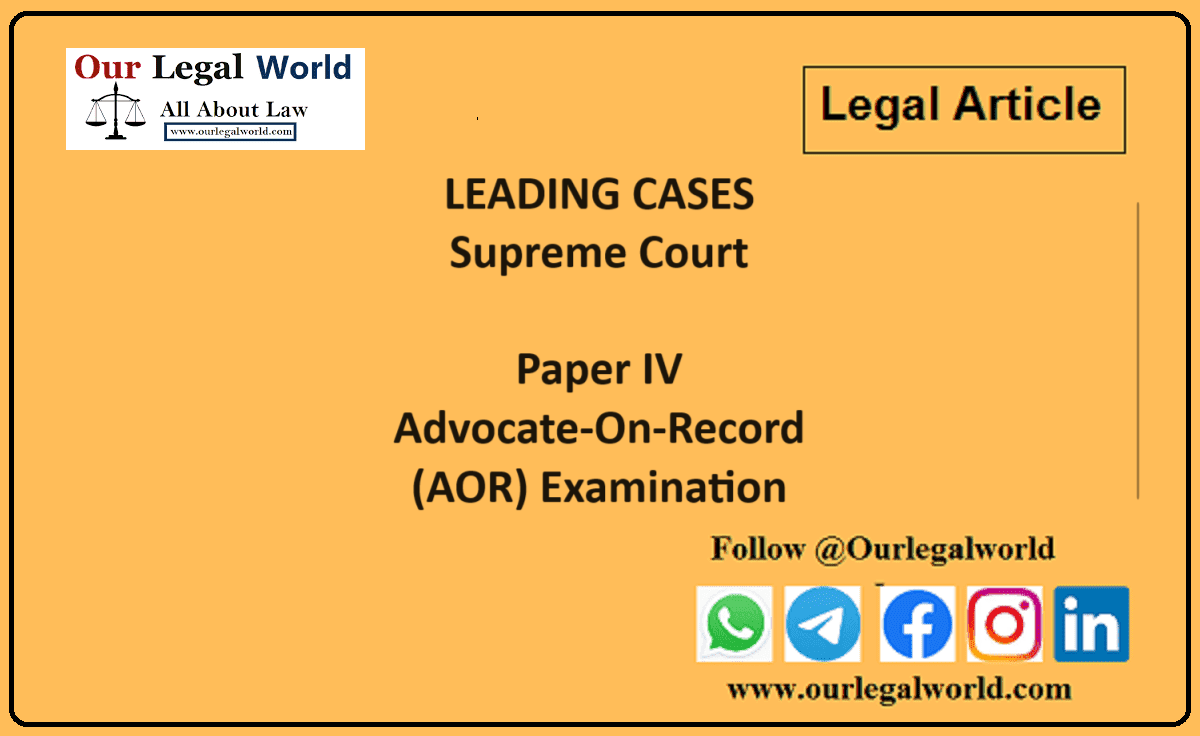Types of Evidences under Indian Evidence Act, 1872
1) Oral Evidence–
Section 60 of the Indian Evidence Act explains Oral Evidence. Oral Evidences are those evidences which are personally seen or heard by the witness giving them and not heard or told by someone else. All the statements which are permitted by the court or the court expects the witness to make such statements in his presence regarding the truth of the facts, are called as Oral Evidences.
Oral evidences must always be direct. An Evidence is direct when it establishes the main fact in issue.
Nandan Mohamma v. Markonda Narasimha Rao, 2006
Documentary Evidences – are defined under section 3 of the Act. All those documents which are presented in the court for inspection regarding a case, such documents are known as documentary evidences.
DDA v. Durga Chand Kaushish 1973
Also Read: Difference between Admission and Confession
3) Primary Evidence –
Section 62 of the Indian Evidence Act define Primary Evidence. Primary evidences are the most superior class of evidences. These are those evidences which are expected by the law and admissible and permissible at the first place. These are that evidence which in any possible condition gives the vital hint in a disputed fact and establishes through documentary evidence on the production of an original document by the court.
4) Secondary Evidences – are defined under section 63 of the Act. These are those evidences which are entertained by the court in the absence of the Primary evidences. Therefore it is known as secondary evidences.
5) Real Evidences –
Real evidences are those evidences which are real or material evidences. Real evidence or proof of a fact is brought to the knowledge of the court by an inspection of a physical object rather than by deriving an information by a witness or a document.
In Laxman Naik V. state of Orissa 1995, the conviction and sentence of death sustained on the basis of circumstantial evidence showing an unbroken and complete chain of events leading to the rape and murder of a seven year old daughter of the brother of the accused.
6) Hearsay Evidences – Hearsay evidences are the ones which the witness has neither personally seen nor heard, nor has he percieved through his senses, but are those which have come to his knowledge through some other person. These are the most weak category of evidences.
7) Judicial Evidence –
Judicial evidences are those which are given before the magistrate in the court. For example- a confession made by the accused before the magistrate in the court is an Judicial Evidence.
8) Non- Judicial Evidence – Any confession made by the accused outside the court and not in front of the magistrate but in the presence of some other person are termed as Non- Judicial evidences.
9) Direct Evidence – Direct Evidence is the evidence directly about the real point in issue. It is the testimony of the witnesses as to principal fact to be proved.
10) Indirect or Circumstantial Evidence –
Justice Fletcher Moulton once had, in respect of circumstances evidence, observed “proof does not mean rigid mathematical formula since, that is impossible.
Circumstantial or indirect evidence are the ones which attempts to prove the facts in dispute by providing other facts. Circumstantial evidences are not definite proof. they only provide a general idea as to what occured at the crime scene.








